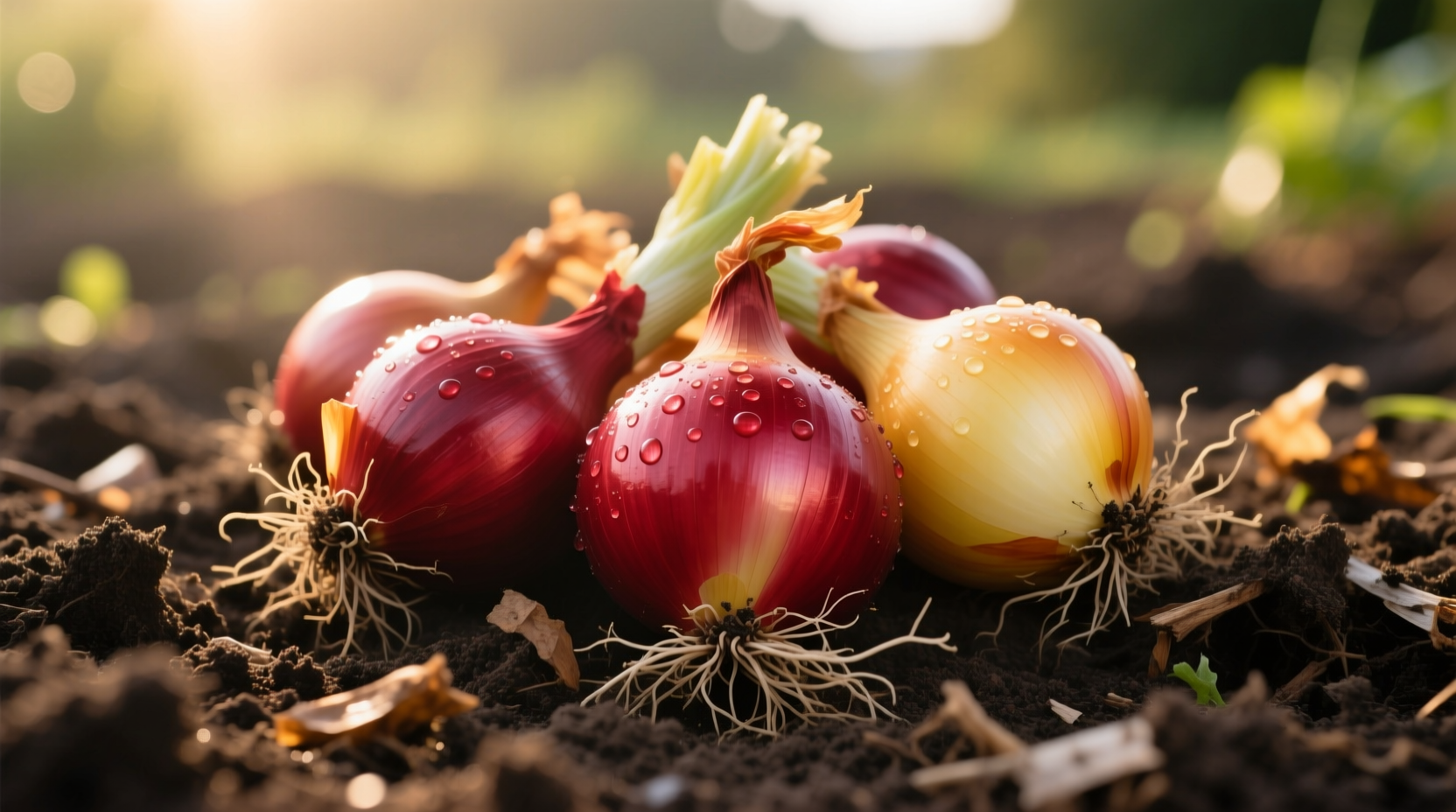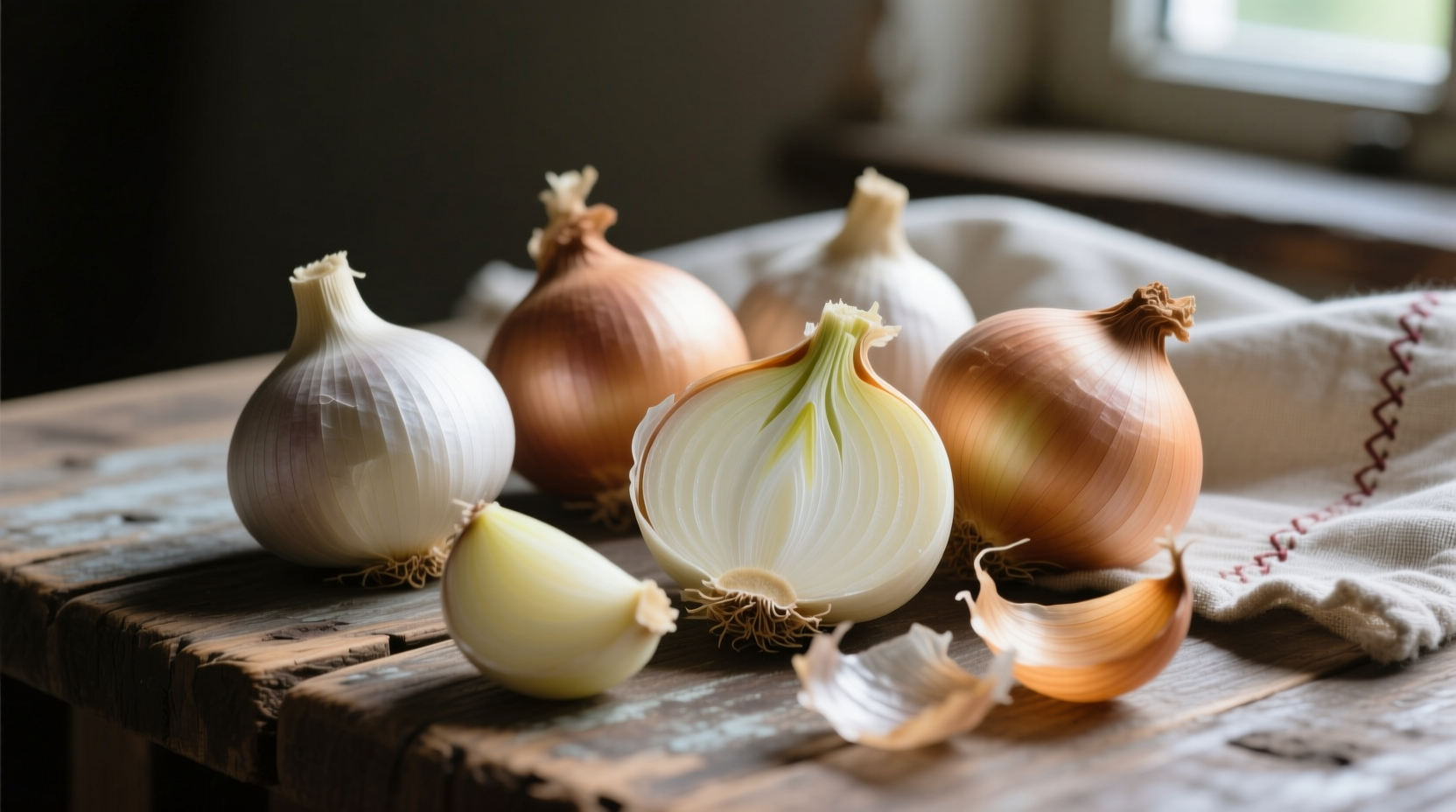Discover how onion bulb sets can transform your gardening experience with earlier harvests and higher success rates than growing from seeds. This comprehensive guide reveals exactly when to plant, how to select quality sets, and proven techniques for maximizing your onion yield - whether you're a first-time gardener or looking to refine your technique.
Understanding Onion Bulb Sets: Your Shortcut to Harvest
Onion bulb sets represent nature's head start for gardeners seeking reliable onion production. These miniature bulbs, typically 1/4 to 1 inch in diameter, are actually seedlings grown for one season then harvested and dried before they fully mature. Unlike seeds that require 100-175 days to produce harvestable bulbs, sets dramatically reduce growing time while increasing success rates.
Gardeners in northern climates particularly benefit from bulb sets, as they bypass the challenging seed-starting phase during short growing seasons. The University of Minnesota Extension confirms that sets establish more quickly in cool spring soils where seeds might struggle to germinate.
Why Choose Bulb Sets Over Seeds or Transplants?
While all three methods have their place, bulb sets offer distinct advantages for home gardeners seeking consistent results. Let's examine how they compare across critical growing factors:
| Growing Method | Time to Harvest | Success Rate | Variety Selection | Cost |
|---|---|---|---|---|
| Bulb Sets | 50-70 days | 85-90% | Limited (10-15 varieties) | $$ |
| Seeds | 100-175 days | 60-70% | Extensive (50+ varieties) | $ |
| Transplants | 75-100 days | 75-85% | Moderate (20-30 varieties) | $$$ |
According to Cornell University's gardening research, bulb sets demonstrate significantly higher establishment rates in early spring planting conditions compared to seeds. The pre-formed bulbs provide immediate growth momentum once soil temperatures reach 40°F (4°C), giving them a critical advantage in regions with short growing seasons.
Selecting Quality Onion Bulb Sets
Not all bulb sets deliver equal results. Your harvest success begins with careful selection:
- Size matters: Choose sets 1/2 to 3/4 inch in diameter - smaller sets rarely bolt while larger ones may flower prematurely
- Check firmness: Squeeze gently; quality sets feel solid without soft spots or shriveling
- Inspect for sprouting: Avoid sets showing green growth, which indicates broken dormancy
- Consider day-length requirements: Match varieties to your region (long-day for northern zones, short-day for southern)
The USDA Agricultural Research Service notes that improper variety selection based on day-length requirements accounts for nearly 40% of failed onion crops. Yellow Spanish varieties typically perform well in northern regions, while Texas Grano types excel in southern climates.
Optimal Planting Timeline for Maximum Yield
Timing your planting correctly makes the difference between a bountiful harvest and disappointing results. Follow this planting progression for best outcomes:
- 4-6 weeks before last frost: Plant sets in well-prepared garden beds
- Planting depth: Position sets 1-2 inches deep with pointed end up
- Spacing: Allow 2-4 inches between sets in rows 12-18 inches apart
- 4-6 weeks after planting: Apply balanced fertilizer as plants establish
- When tops reach 6 inches: Begin consistent watering (1 inch per week)
- 8-10 weeks after planting: Reduce watering as bulbs mature
- When tops fall over naturally: Harvest your mature onions
Purdue University's horticulture department emphasizes that planting depth significantly affects bulb formation. Sets planted too shallowly often produce multiple small bulbs, while those planted too deep may fail to develop properly. The optimal 1-2 inch depth balances soil temperature regulation with proper bulb expansion.
Climate-Specific Planting Considerations
Successful onion growing requires adapting techniques to your specific climate zone:
- Northern zones (3-5): Plant in early spring as soon as soil can be worked; focus on long-day varieties
- Mid-latitude zones (6-7): Plant early spring for storage onions or late summer for overwintering varieties
- Southern zones (8-10): Plant in fall for spring harvest; prioritize short-day varieties
Research from Oregon State University reveals that bolting (premature flowering) rates increase by 25% for every week planting is delayed beyond the optimal window in northern climates. This critical timing factor explains why many first-time growers experience disappointing results with onion sets.
Essential Care Practices for Healthy Onion Bulbs
While bulb sets require less attention than seed-started onions, proper care ensures maximum bulb development:
- Watering strategy: Maintain consistent moisture (1 inch weekly) until bulbs begin forming, then gradually reduce
- Weed management: Hand-pull weeds carefully to avoid disturbing shallow roots
- Fertilization: Apply nitrogen-rich fertilizer 3-4 weeks after planting, then switch to phosphorus-potassium blend
- Disease prevention: Rotate crops annually and avoid overhead watering to prevent fungal diseases
Agricultural studies show that inconsistent watering during bulb formation causes the most common home garden issue - splitting bulbs. The University of California's gardening guide recommends using mulch to maintain even soil moisture, which can increase harvest yields by up to 30%.

Harvesting and Curing Your Homegrown Onions
Knowing when and how to harvest determines your onions' storage life and flavor development:
- Harvest timing: When tops naturally fall over and begin yellowing (typically late summer)
- Lifting technique: Carefully loosen soil around bulbs before pulling to avoid damage
- Curing process: Dry bulbs in warm, well-ventilated area for 2-3 weeks with tops attached
- Storage preparation: Trim tops to 1 inch and roots to 1/4 inch after curing completes
Properly cured onions can store for 6-8 months under ideal conditions (32-40°F with 65-70% humidity). The USDA notes that skipping the curing process reduces storage life by up to 75%, making this step essential for gardeners wanting to enjoy their harvest throughout winter.
Troubleshooting Common Onion Growing Issues
Even with bulb sets, gardeners may encounter these challenges:
- Bolting (flowering): Caused by temperature fluctuations; remove flower stalks immediately to redirect energy to bulb growth
- Small bulbs: Usually indicates overcrowding or nutrient deficiency; thin plants early if too dense
- Rotting sets: Results from planting in cold, wet soil; wait for proper soil temperature (40°F minimum)
- Purple leaves: Indicates phosphorus deficiency; apply bone meal or rock phosphate
Michigan State University's extension service reports that approximately 65% of small onion bulb issues stem from improper spacing. Their research shows optimal spacing varies by variety - yellow storage onions need 4 inches between plants while green onions require only 2 inches.
Maximizing Your Onion Harvest Success
By understanding the unique advantages of onion bulb sets and implementing these research-backed techniques, you'll enjoy reliable harvests with minimal effort. Remember that proper variety selection for your climate zone, precise planting timing, and consistent moisture management during bulb formation represent the three most critical factors for success. With these fundamentals in place, even novice gardeners can achieve professional-quality onion harvests from bulb sets.











 浙公网安备
33010002000092号
浙公网安备
33010002000092号 浙B2-20120091-4
浙B2-20120091-4